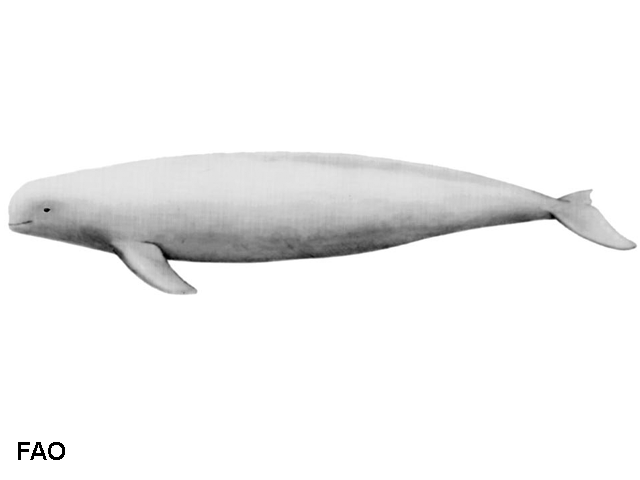| Phocoenidae (porpoises) |
| 227 cm TL (male/unsexed) |
|
pelagic; marine; depth range 0 - 250 m, anadromous |
| Indo-West Pacific and Asia Inland Waters: Neophocaena phocaenoides phocaenoides: Persian Gulf, South China Sea, East China Sea, Indonesia, Philippines, Turtle Islands, Sulu Sea; Neophocaena phocaenoides sunameri: China, Korea, Japan, East China Sea; Neophocaena phocaenoides asiaeorientalis: Yangtze River, China (Ref. 1522). Found in tropical to warm temperate coastal waters (Ref. 81021). |
|
|
| Found in both fresh and marine. Feeds on small fishes, squids and shrimps; also ingests some plant material including leaves and rice (Ref. 1394). In 2006, a population survey was able to record a total of 300 individuals of Neophocaena phocaenoides asiaeorientalis, as experts provide an estimate of 1,400 individuals based on the said survey. This is considered a 50% decline from the survey done in 1991 (Ref. 85336). Found in tropical to warm temperate coastal waters, i.e., shallow bays, mangrove swamps, estuaries and large rivers, but mainly prefers estuarine waters (Ref. 81021). Occurs singly, in pairs, or in small groups of up to 12 individuals. Not as showy as other dolphins; though, they are occasionally seen breaking the surface in calm seas (Ref. 801). Feeds on small fishes, squids and shrimps; also ingests some plant materials including leaves and rice (Ref. 1394). |
|
Vulnerable (VU); Date assessed: 10 August 2017 (A2cde+3cde+4cde) Ref. 123251)
|
|
|
Mostly found in saline waters (Ref. 81021). Finless porpoises around Hong Kong can handle rough waters quite well, suggesting that depth is a more important factor than surface conditions. Considered as a resident species and has been observed mostly in southern and eastern waters. Exhibit consistent seasonal shifts in south of Lantau Island. Parturition occurs mainly from November to March (Ref. 127118). Highest frequency of strandings was an average of 11 strandings per year (Ref. 86939). C: Ref. 81021, 84649, 127118; M: Ref. 1394. |
Source and more info: www.sealifebase.org. For personal, classroom, and other internal use only. Not for publication.

